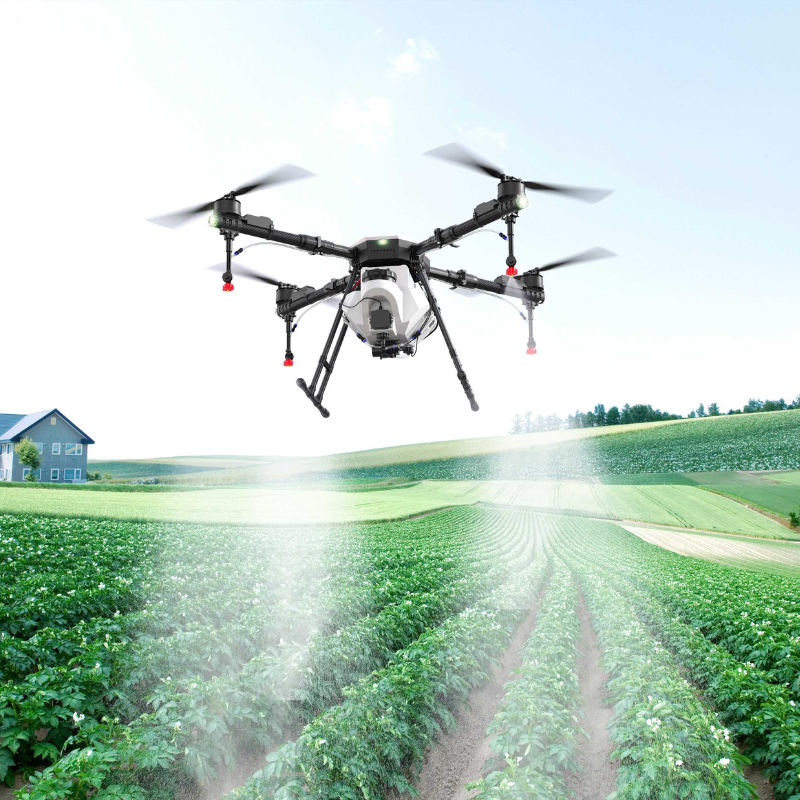
Essential Safety and Operational Guidelines for Beginner Agricultural Drone Pilots
Operating an agricultural drone requires strict adherence to safety protocols and operational best practices to ensure both personal safety and effective crop protection. Below are critical considerations for novice pilots:
1. Pre-Flight Preparations
- Environmental Assessment:
- Conduct a thorough site inspection to identify obstacles such as power lines, trees, and buildings. Maintain a minimum clearance of 10 meters vertically and 5 meters horizontally from obstacles during flight.
- Avoid flying in restricted zones, including airports, military areas, and densely populated regions.
- Check weather conditions: Do not operate in winds exceeding 3 Beaufort (12–19 km/h), rain, or temperatures above 30°C.
- Equipment Inspection:
- Verify battery levels for both the drone and remote controller. Ensure batteries are charged and securely installed.
- Calibrate sensors and the magnetic compass if the drone has been relocated or stored for extended periods.
- Test communication links between the drone and remote controller.
- Personal Protective Equipment (PPE):
- Wear a helmet, gloves, safety goggles, and a high-visibility vest. Avoid loose clothing or open-toed shoes.
2. Operational Protocols
- Takeoff and Landing:
- Initiate takeoff on flat, debris-free ground. Maintain a 10-meter distance from the drone during these phases.
- Gradually adjust throttle for smooth ascents and descents. Avoid abrupt maneuvers.
- In-Flight Management:
- Keep the drone within visual line of sight (VLOS) at all times.
- Monitor battery levels continuously. Activate the return-to-home (RTH) function if the battery drops below 30% capacity.
- Adjust flight parameters based on crop type and pesticide requirements. For example:
- Flight height: 1.5–3 meters above the crop canopy.
- Speed: 3–5 m/s for optimal spray coverage.
- Pesticide Application:
- Use low-toxicity pesticides labeled for aerial application. Follow secondary dilution protocols to prevent clogging.
- Position the drone upwind of the target area to minimize drift. Avoid spraying in crosswinds exceeding 2 Beaufort (8–12 km/h).
3. Safety and Emergency Procedures
- Collision Avoidance:
- Suspend operations immediately if the drone deviates from its flight path or loses signal. Attempt manual recovery or activate RTH.
- If the drone collides with an object, land it safely and inspect for damage before resuming flights.
- Water Exposure:
- Power off the drone immediately if it lands in water. Retrieve it promptly and dry all components before inspection.
- Post-Flight Maintenance:
- Clean the drone with fresh water to remove pesticide residues. Store it in a cool, dry place away from direct sunlight.
- Log flight details, including battery cycles, spray volume, and maintenance tasks.
4. Regulatory Compliance
- Registration and Certification:
- Register the drone with local aviation authorities and obtain required certifications.
- Purchase liability insurance to cover potential third-party damages.
- Legal Restrictions:
- Adhere to national and regional drone regulations, including altitude limits (typically 30 meters for agricultural drones) and no-fly zones.
5. Training and Teamwork
- Skill Development:
- Complete accredited training programs covering drone operation, pesticide handling, and emergency response.
- Crew Coordination:
- Assign roles for pilot, spotter, and ground support. Ensure clear communication via two-way radios.
By prioritizing safety, thorough preparation, and adherence to regulations, beginner pilots can mitigate risks and maximize the efficiency of agricultural drone operations. Always consult local authorities and equipment manuals for region-specific guidelines.
